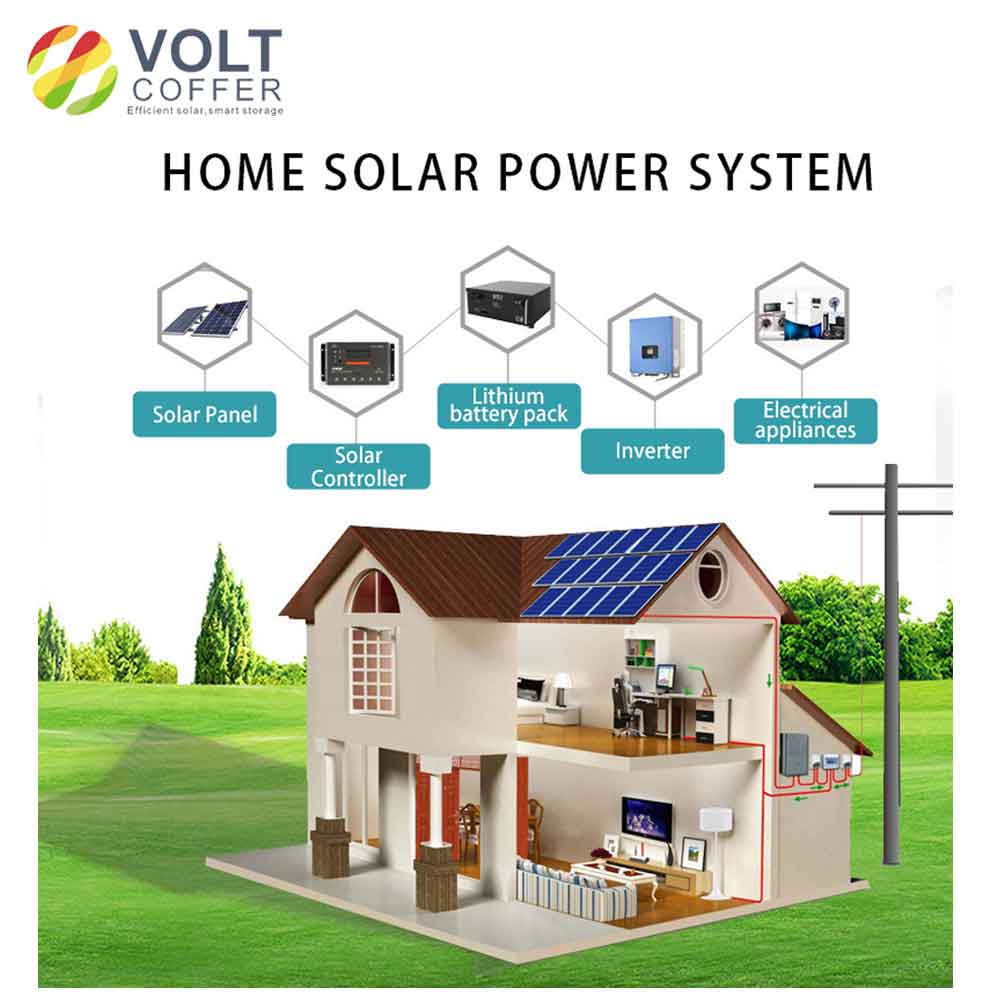
Integrating solar panels with home energy storage system solutions involves several steps to ensure a seamless and efficient system. Here’s a comprehensive guide to help you understand the process:
1. Assess Your Energy Needs
- Evaluate Energy Consumption: Determine your daily, monthly, and yearly energy usage. This information can usually be found on your electricity bills.
- Identify Critical Loads: Identify which appliances and systems in your home are critical and need to remain powered during a blackout.
2. Solar Panel Selection
- System Size: Based on your energy needs, calculate the size of the solar panel system required.
- Type of Panels: Choose between monocrystalline, polycrystalline, or thin-film panels based on efficiency, budget, and space availability.
- Location: Determine the best location for installing the panels, typically a roof with maximum sun exposure.
3. Home Energy Storage SystemOptions
- Types of Batteries: Choose between lithium-ion, lead-acid, or other types of batteries. Lithium-ion batteries are popular due to their efficiency and longevity.
- Capacity: Decide on the storage capacity needed based on your energy consumption and the duration you want the battery to power your home.
- Integration: Ensure the battery system is compatible with your solar panels and inverter.
4. Inverter Selection
- Type of Inverter: Choose between string inverters, microinverters, or power optimizers. Microinverters and power optimizers offer better performance in partially shaded conditions.
- Compatibility: Ensure the inverter is compatible with both the solar panels and the battery storage system.
5. System Design and Layout
- Electrical Design: Plan the electrical layout, including wiring, circuit breakers, and disconnects.
- Mounting System: Select a mounting system for the solar panels that suits your roof type and ensures proper ventilation and cooling.
6. Installation
- Professional Installation: Hire a certified solar installer to ensure proper and safe installation.
- Permits and Inspections: Obtain necessary permits and schedule inspections as required by local authorities.
7. Monitoring and Maintenance
- Monitoring System: Install a monitoring system to track the performance of your solar panels and battery storage.
- Maintenance: Regularly clean the solar panels and check the battery system for optimal performance.
8. Financial Considerations
- Incentives and Rebates: Research and apply for any available solar incentives, tax credits, or rebates.
- Financing Options: Explore different financing options such as solar loans, leases, or power purchase agreements (PPAs).
9. System Integration
- Grid Connection: Ensure your system is properly connected to the grid to allow for net metering or feed-in tariffs.
- Backup Power: Set up the system to provide backup power during outages, ensuring critical loads are prioritized.
10. Benefits of Integration
- Energy Independence: Reduced reliance on the grid, leading to energy cost savings.
- Backup Power: Reliable power supply during outages.
- Environmental Impact: Reduced carbon footprint by using renewable energy.
11. Challenges and Considerations
- Initial Cost: High upfront costs for solar panels and batteries.
- Space Requirements: Adequate space is needed for solar panels and battery storage.
- Technical Expertise: Requires professional installation and maintenance.
Conclusion
Integrating solar panels with home energy storage system solutions is a smart investment for achieving energy independence and sustainability. By carefully planning and selecting the right components, you can create an efficient and reliable system that meets your energy needs.
